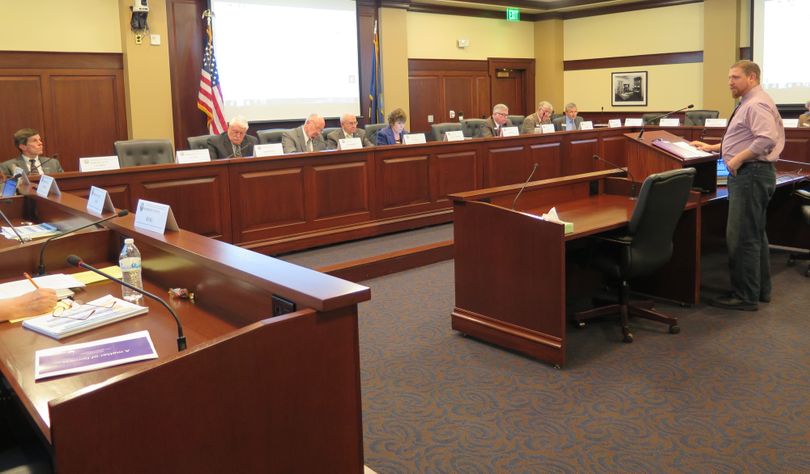Lawmakers take testimony on state employee pay

The Legislature’s joint CEC Committee – that stands for Change in Employee Compensation – is meeting today and is taking public testimony. First up to testify was Rob Pangaro, a faculty member from Boise State University with multiple degrees who is working on his Ph.D, is an Army veteran and an ordained minister. He told lawmakers he took a $10,000 a year pay cut to move from Washington to Idaho. “One thing I did not take into account, though, was even though I knew my pay would be less, that everything still cost the same,” he said. A comparable house in Boise would have $100,000 more, he said, which he couldn’t afford on his salary.
Pangaro said, “The cost of living is significantly more than what an average state employee makes.” He urged lawmakers to make “a concerted effort” to ensure that hard-working state employees are rewarded for their work.
Next up was Fred Birnbaum, lobbyist for the Idaho Freedom Foundation, who told lawmakers that he believes the state’s legally mandated annual CEC Report isn’t complete, because it doesn’t reflect the high cost of health insurance for self-employed residents of the state. He cited the case of a Realtor from Canyon County whose husband runs a rock quarry, and called the burden on them for health insurance costs “crushing.” “Idahoans who are not working for the state of Idaho and don’t work for big companies are paying twice for health care,” Birnbaum said.
Janet Gallimore, head of the Idaho State Historical Society, spoke in favor of Gov. Butch Otter’s proposal for 3 percent merit raises for state employees and a 3 percent adjustment to the state’s salary structure. She said her agency has the lowest compa-ratio, reflecting how close employees are paid to policy rates for their position, of any agency, and competes for specialized professionals, including archaeologists and maintenance craftsmen, with other agencies that pay much more. For cultural resource planners, for example, the Historical Society pays between $11,700 and $21,000 a year less than the Idaho Transportation Department, she said.
“The implications of this include having either to settle for a less qualified candidate than what we like, or retaining such employees for a short time, only to have them recruited away from us at a higher wage,” Gallimore said. “Both of these options cost time and money.”
